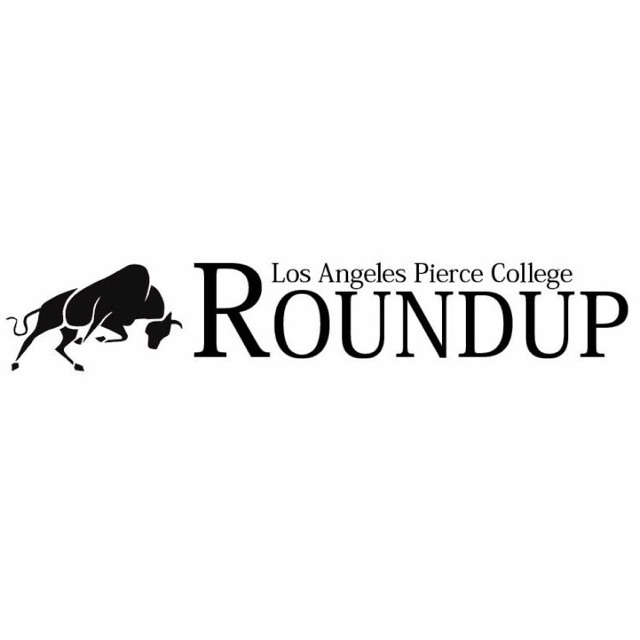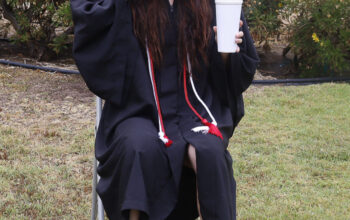Pro: Going strawless
When drinking beverages out in public, we are accustomed to drinking out of straw. Some of us also have found ourselves asking waiters and behind the counter workers at some fast food chains for a straw.
According to businessinsder.com, this first began when former Governor Jerry Brown signed Assembly Bill 1884 into law, which “prohibits dine-in restaurants from automatically providing plastic straws” to customers.
The law went into full effect on January 1, 2019.
“In the U.S. alone, approximately 500 million straws are used every single day,” according to nationalgeographic.com.
Pierce College should join in on the elimination of single-use plastic straws because they are made out of polypropylene, which is not biodegradable.
Also, when recycled they become microplastics, which are fatal to marine life if consumed.
Two main reasons behind the sudden push to ban single-use plastic straws come down to an environmental issue, which is to decrease pollution in our oceans and to protect marine life.
According to onegreenplanet.org, “The Great Pacific Ocean Garbage Patch is roughly the size of our continent, and it contains approximately 100 million tons of debris, with 80 percent of it coming from human contamination.”
Furthermore, if we don’t want to swim in polluted oceans and sunbathe in sand-littered with trash, what makes us think that marine animals don’t mind swimming in plastic infested waters in their environment?
According to strawlessocean.org, by 2050, 99 percent of all seabird species will have ingested plastic. This is because they often mistake plastic for food.
When animals consume plastic they can die of starvation because it gets stuck in their stomach preventing them from eating their natural food.
Unfortunately, their stomach is not the only place where plastic is being found in their bodies.
A viral video back in 2015 captured a sea turtle that had a plastic straw stuck up its nostril, which had to be physically pulled out of its nose, causing it immense pain.
However, sometimes it takes videos such as this one to be the catalyst for change and get people to go strawless.
Whether we like it or not, change is coming and it’s just around the corner.
As Starbucks announced that by 2020 they will eliminate plastic disposable straws, which decreases more than one billion straws a year. Instead, they will use recyclable, strawless lids that will resemble an adult sippy cup, according to a New York Times article.
In addition, a new policy at the beginning of the year had the California State Universities (CSU) jump on the bandwagon as well by having them eliminate plastic straws and bags.
According to calstate.edu, a new policy stated that the CSU’s 23 campuses “must phase out styrofoam food service items by January 2021 and discontinue sales and distribution of single-use plastic water bottles before January 2023.”
If Pierce does decide to follow suit and eliminate single-use plastic straws there can be some alternatives. These could be the use of metal, bamboo and glass straws to compensate, as all three are reusable and more environmentally friendly.
In society, if we have successfully adapted to the grocery bag ban by bringing our own reusable bags whenever we go grocery shopping, we can also adapt to the straw ban by getting used to drinking without the use of straws or we can simply carry around our own reusable straw.
Con: A different approach
When it comes to saving the environment, humans are doing all they can to clean up their trace of waste. A recent policy in California is aiming to battle the war on plastic, and the pressure to initiate the law is spreading to college communities.
The plastic straw law that has been adopted by California states full service restaurants are now banned from giving away plastic straws without the request of the customer.
For Pierce to implement this would mean more time wasted trying to figure out whether someone wants a straw or not.
According to nbcnews.com, the reported estimate of the amount of plastic spilling into the oceans is 8.8 million tons a year.
With this amount of plastic spilling occuring, Pierce should be focusing its efforts on other ways to reduce our use of plastic instead of incorporating a facade law that doesn’t really have any impact at all.
James Rainey, a reporter for NBC News, wrote an article talking about how banning plastic straws would not be enough to clean the ocean.
“Even if straws can be corralled, they make up only a tiny fraction of the plastic that ends up in the world’s oceans,” Rainey said.
According to the same article, an audit of waste collected by the environmental group Break Free From Plastic said the biggest brand contributors to plastic pollution were Coca-Cola, Pepsi and Nestle, who are the dominant producers of bottled drinks.
If Pierce were to adopt the straw law, there would be even more bottled drinks throughout campus and this would do even more harm to the ecosystem.
Not only is it problematic for the environment, but it poses issues for disabled people as well.
According to Center for Disability Rights, “For those whose disability or living situation makes this impractical, if not downright impossible, reusable straws are simply not an option. Additionally, metal, bamboo, glass and acrylic straws pose injury risks, especially for those with tremors, spastic episodes, and temperature sensitivity conditions. Paper and pasta straws also put individuals at risk of choking.”
Instead of focusing its effort on a ineffective initiative, Pierce should do more in promoting recycling and reducing the amount of bottled drinks that use plastic.
Investing in glass bottles as well as paper straws would be a better alternative to the traditional use of plastic straws.
After all, there would be a much higher benefit to the environment if we used alternatives instead of adopting a policy that doesn’t even eliminate the use of plastic straws and in some cases may end up doing more damage to the environment.
For example, Starbucks has announced that they will be replacing straws with strawless lids. The lids themselves are entirely made up from plastic and mimic the exact thing environmentalists are fighting.
While Starbucks would argue that the lids are easier to collect for recycling, the rate of recycling in the United States is only 34.3 percent, leaving most plastic produced unrecycled.
According to strawlessocean.org, “If we don’t act now, by the year 2050 there will be more plastic in the ocean than fish.”



